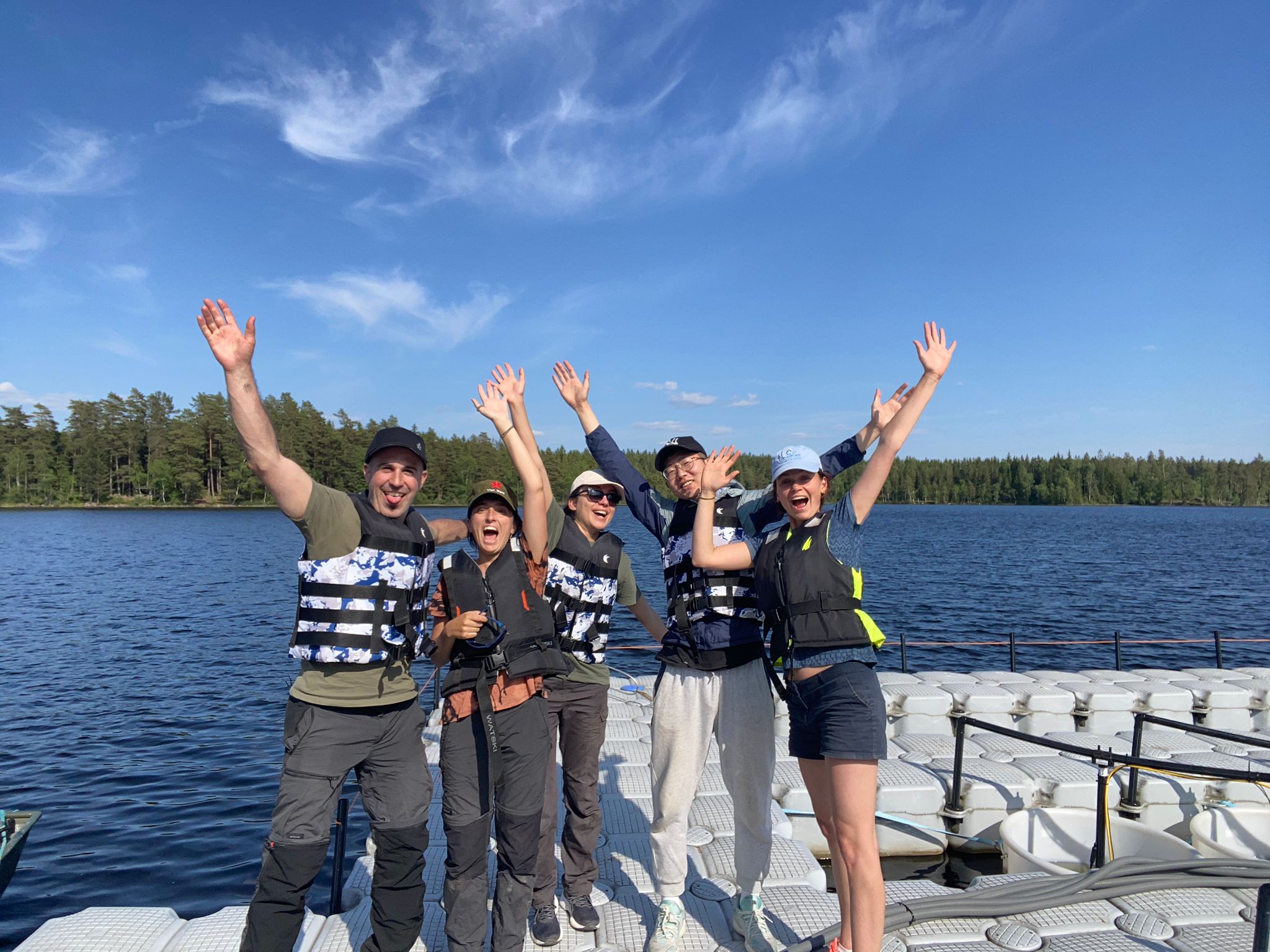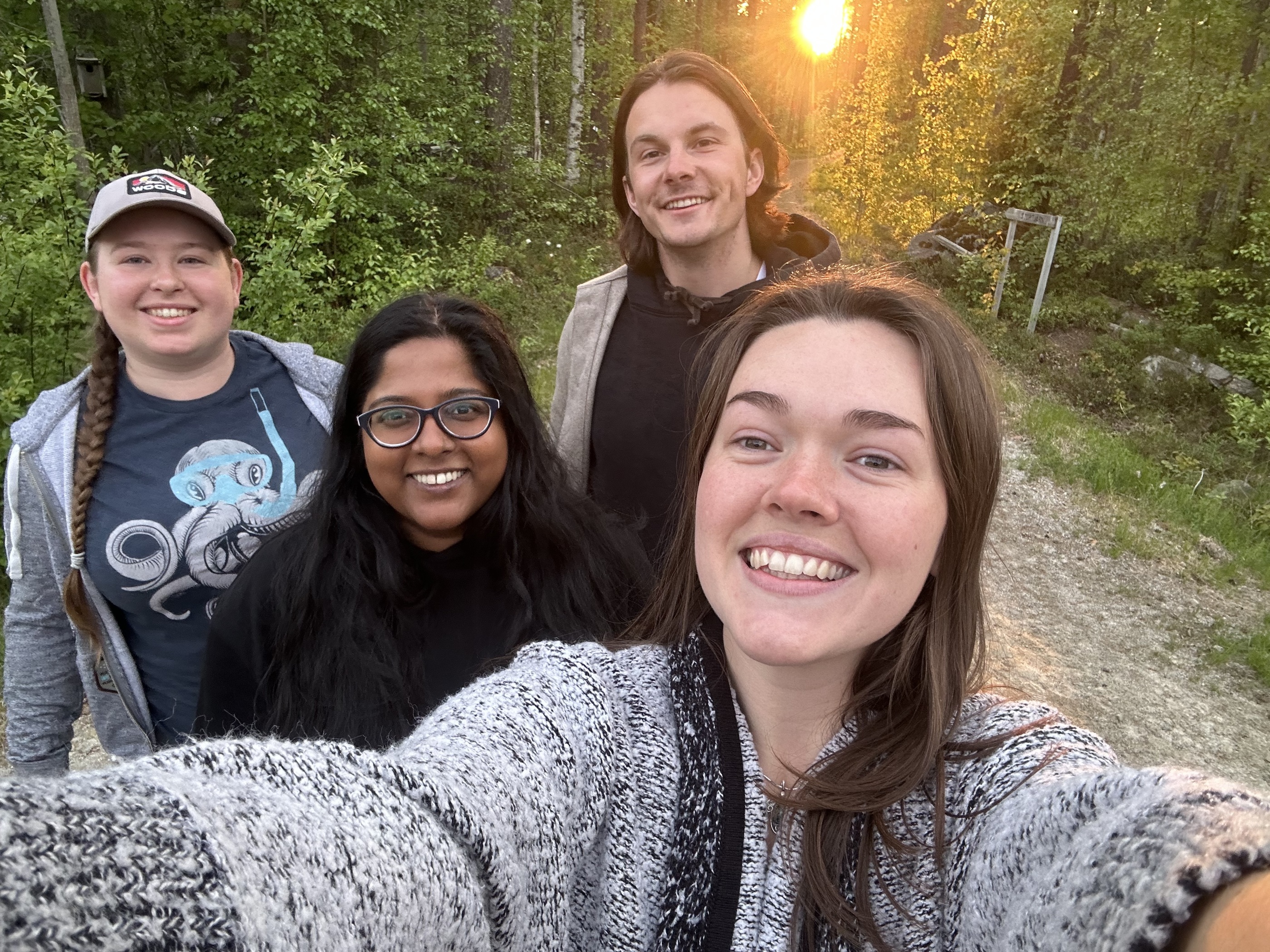The joint AquaNet and AQUACOSM-plus experiments at SITES Asa and Svartberget have been running for about a month now (details about the project start are reported here). Preliminarily results from the experiments (graph below) show the difference in specific conductivity (a proxy for salinity) across the three different treatments; 1) Control, where no salt is added, 2) Gradual, where small amounts of salt are added in increments over time and 3) Extreme, where a large amount of salt is added once at the start of the experiment. Data from automatic in situ sensors in each mesocosm and manual samples throughout the experiment will be assessed to see how different salinity disturbance regimes impact the function and composition of biological communities.
The participants at the two stations have been busy maintaining and sampling the mesocosm experiments, learning from and collaborating with participants from different countries, while at the same time enjoy the Swedish summer.

At Asa, the core team is comprised of Guangbin Gao (Sweden), Andrra Zhjeqi (Sweden), Judit Rodrigo (Spain), with Pablo Urrutia Cordero (Spain), Jana Isanta-Navarro (Sweden), Jing Li (Sweden) and Pepe Rodriguez (Canada) also participating in the experiment for several weeks. Niels Aagaard Jakobsen (Research Engineer at Asa Station) led setting-up the mesocosm infrastructure at the station, while Silke Langenheder (SITES AquaNet Lead) and Wilhelm Lönnqvist (Asa Station Manager) supported the experiment set-up and preparations.
When asked about his experience at Asa station so far, Guangbin Gao stated, “I am very lucky and pleased to participate in the AquaNet experiment at Asa. It is a complete system of ecological experiments. Here, through the application of high-frequency sensors and daily sampling, I learned how to build and operate the mesocosm facility. Of course, there is a great opportunity to communicate and collaborate with researchers from different countries.”

At Svartbergt, the core team is comprised of Erin Ford (Canada), Mary Mullins (USA) and Anusha Singh (Czech Republic), with support at the start of the experiment from Aidan Guttormson (Canada) and Shelley Arnott (Canada). In addition, SITES AquaNet staff (Ingrid Sassenhagen, William Colom Montero) and Svartberget Station staff (Johan Westin, Johannes Tiwari and Viktor Boström) helped with the set-up and preparation for the experiment at the station.
On behalf of the team at Svartberget, Mary Mullins, summarized the experience, “Here at the Svartberget station in Vindeln, we have been busy honing our field and lab skills in limnology! From collecting plankton samples to analyzing the water chemistry of the mesocosms, we are determined to discover the impacts of salinity on this unique ecosystem. Living at the station surrounded by nature has been just as wonderful as exploring the nearby towns and making friends during Midsummer Celebration.”
With only a few weeks left in the experiment, there are only a few salt additions and samplings left, and then it is time to clean and store the AquaNet mesocosms for future experiments. Once the teams are back at their home institutions and have had time to recover, it is on to the analysis and results. So stay tuned!